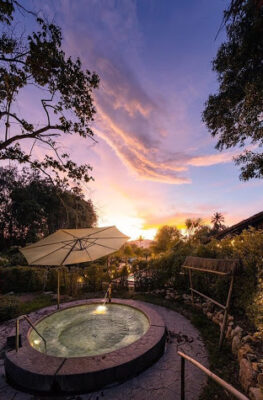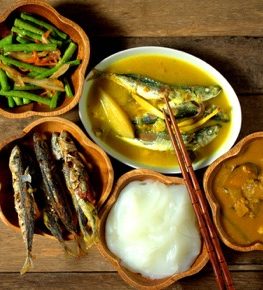Published on December 25, 2013

From the Tamil word ‘kari’, meaning ‘spiced sauce’, comes the word ‘curry’, adopted by the British to refer to hot, spicy, gravy-based dishes. A number of different South Asian soup or stew dishes, nearly always containing onions, garlic, ginger, turmeric, and chilli were all referred to as ‘curry’.
Curries from Southeast Asia require different seasonings from South Asian curries. Curry pastes from Thailand, Malaysia, Indonesia, Brunei, Singapore, and areas of southern Philippines tend to be hotter and more fragrant than thsoe from the subcontinent, and often include fresh chillies.
The heat is turned down in the mild, fragrant curries of Myanmar, Cambodia, Laos and Vietnam. The Philippines’ national dish, adobo, has very little if any spice, depending largely on the chef or the family recipe. However, people from the Philippines’ Bicol region brag about their Bicol Express, a hot and spicy dish with coconut milk and chili.
Southeast Asian curries also tend to have a much quicker cooking time than South Asian curries and typically result in thinner, more soup-like sauces. There are exceptions such as Indonesian and Malay rendang, which is cooked over several hours until a thick rich sauce clings to melt-in-your-mouth morsels of meat.
ASEAN’s curries often combine a mind-boggling lists of ingredients. At first glance this will discourage the casual home cook with little time to spare. Nevertheless Cook Eat Blog insists that no curry is too tricky to make from scratch once basic techniques and ingredients are understood.
If you already have a pestle, mortar and wok in the kitchen then all you need is some basic ingredients in the pantry; shrimp paste, fish sauce, lemon grass, white pepper, turmeric, coriander seeds, dried chillies, coconut milk, coconut cream, and rice. These staples will get you started. And be sure to make your pastes in bulk to be stored for future use. This will cut your preparation time down significantly.
What everyone will agree with is that rather than resort to pre-mixed powders and shop-bought jars, it is much better to learn how to make your own. Even better than that is to plan a culinary (or “currynary”) tour of Southeast Asia and enroll in cooking classes to learn from the locals how simple their curries really are!
Sources: BBC; Cook Eat Blog; images for montage from Wikipedia.






